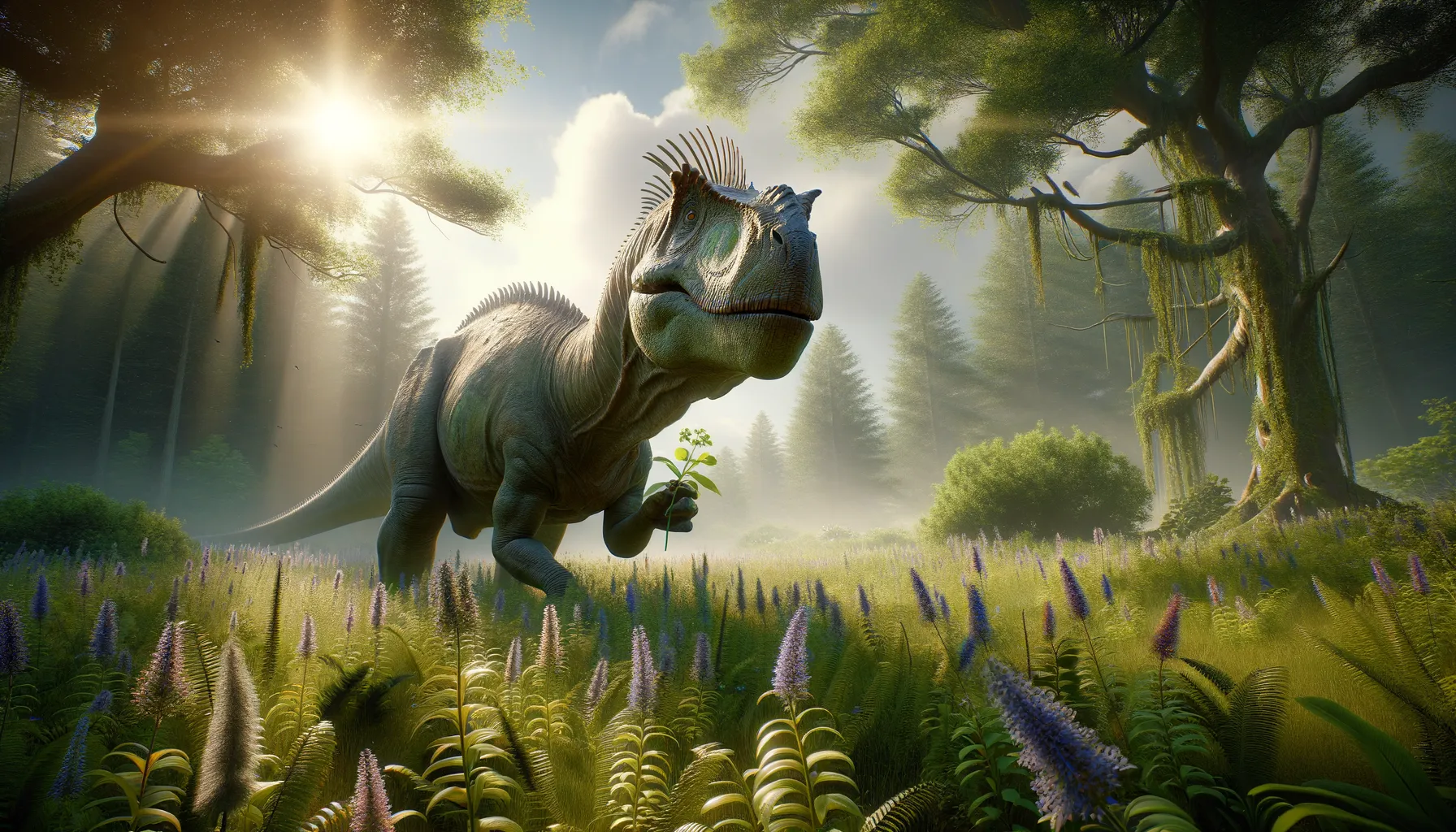
Telmatosaurus
The island hopper of the dinosaur world.
Period
Cretaceous
Length
Around 5 meters (16 feet) long.
Height
Roughly 2 meters (6.5 feet) at the hip.
Weight
Approximately 500 kg (1100 lbs).
Telmatosaurus was a small hadrosaurid dinosaur known for its relatively modest size compared to other members of its family. Lived during the Late Cretaceous period in what is now Europe, it was a plant-eater that likely browsed on low-lying vegetation. Its fossils provide insights into the unique ecology of island habitats and the evolutionary pressures faced by these ancient creatures.
Diet
Telmatosaurus was a herbivore, feeding primarily on a diet of low-lying plants. Its diet likely included ferns, cycads, and other available vegetation it could reach with its relatively low height.
Hunting
As a herbivore, Telmatosaurus did not hunt for food. Instead, it would have spent much of its time foraging for plants and avoiding predators.
Environmental challenges
Living on an island, Telmatosaurus faced unique environmental challenges including limited resources and potential isolation. The scarcity of competitors may have driven its relatively small size, a phenomenon known as 'island dwarfism'. Climate changes and geological events in the Cretaceous could also have influenced its habitat significantly, impacting food availability and predator dynamics.
Speed
Moderate, estimated to be faster than larger dinosaurs.
Lifespan
Estimated 20 to 30 years based on growth patterns.
First discovery
Discovered in Romania in 1895 by Franz Nopcsa.
Fun Facts
- Telmatosaurus was a duck-billed dinosaur that lived about 69 million years ago during the Late Cretaceous period.
- It was one of the smaller hadrosaurs, reaching lengths of around 5 meters (16 feet).
- Telmatosaurus fossils have mostly been found in what is now Romania, giving it a European heritage.
- Unlike some of its relatives, Telmatosaurus did not have a fancy crest on its head, making it look simpler compared to other hadrosaurs.
- Its name Telmatosaurus means 'marsh lizard' because it likely lived in swampy environments.
- Telmatosaurus had a herbivorous diet, feeding on a variety of plants, using its broad, flat beak similar to a modern-day duck.
- Scientists believe the Telmatosaurus might have lived in herds, which provided safety in numbers from predators.
Growth and Development
Telmatosaurus likely experienced slow and steady growth once it hatched due to limited resources on its island habitat. This gradual growth pattern would aid in its survival by reducing its caloric needs. Juveniles might have stayed closer to protective shrublands to avoid predators, while adults could explore more open areas.
Habitat
Telmatosaurus inhabited lowland areas with dense plant cover, providing both food and shelter. Its habitat would have consisted of lush, subtropical environments with significant water sources such as rivers or marshlands. The abundant plant life would be crucial for sustaining its herbivorous diet.
Interaction with other species
Telmatosaurus likely coexisted with other herbivorous dinosaurs, small mammals, and numerous birds which shared its habitat. As prey to large predators, Telmatosaurus depended on speed and alertness to avoid them. Its social behavior may have involved living in groups, providing added protection from predators through collective vigilance.
Natural lifespan
Telmatosaurus could live naturally up to 20-30 years.
Reproduction
Telmatosaurus likely laid eggs, with nesting site selection in safe and sheltered areas to protect from predators. Fossils of eggs or nests are rare, but its reproduction strategy would mirror other hadrosaurs, with possible parental care in the early stages to ensure higher survival rates of offspring.
Social behaviour
Telmatosaurus may have exhibited some social behavior, potentially forming small herds for protection and foraging efficiency. Communication among group members would be key, likely through vocalizations and physical cues to maintain group cohesion and alert against threats.
Fossil locations
Telmatosaurus fossils have been primarily unearthed in Romania, particularly in the Hațeg Basin. This fossil-rich area provides important insights into the diversity and adaptations of Cretaceous island ecosystems. The European context of its remains contributes to understanding continental drift and evolution during this period.
